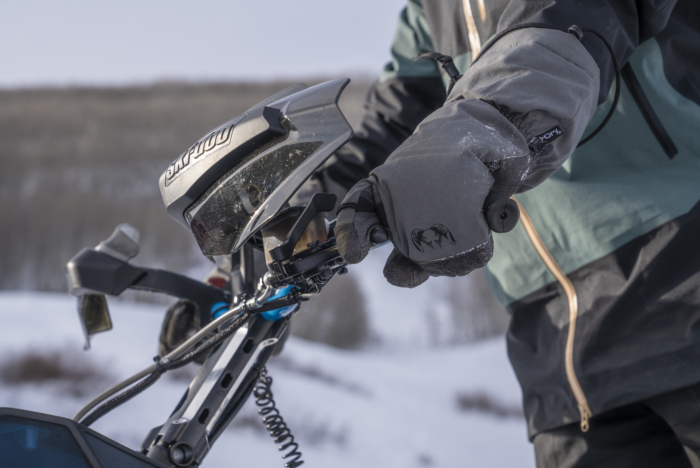
A mass of racers ran with skis and poles in hand to the starting line. I clipped my boots in and secured pole straps — time to race. “Three! Two! One! Go!” … the loudspeakers blared out, and I was skiing away in the frenzied pack.
It was my first American Birkebeiner, a cap to my first season as a Nordic skier. Having never cross-country skied in my life, I set a goal last fall to learn to ski and finish the Birke before the snow melted in my front yard.
At 51KM, the hilly Wisconsin race is a feat for even the most advanced skier. With just 13 weeks from my first day on skis to the start line, I relied on experts and patient friends to get me up to speed. Here are a few tips I picked up along the way.
Don’t Skimp On Gear: As a newbie, I wanted my ski equipment to preform well during a long-distance race but without completely blowing my budget. The RCR Skate Ski ($300) from Fischer walked that line. I’m clearly no expert, but the skis felt light and fast even when blowing through crusty old snow on the track.
I paired these skis with the Fischer RC7 Skate My Style boots ($210), which are women’s-specific boots designed for entry-level racers to experienced athletes. They fit me well, staying comfortable and secure for untold training and race miles on snow.
Finally, the Swix Team TBS Carbon poles ($201) are a light but strong carbon-based pole that can withstand ski edges and impact during mass starts (and my training falls).
Buddy Up: Minneapolis, my hometown, is a Nordic ski mecca, and I immediately immersed myself in the local knowledge. One of my first outings was with pro skier and Birkebeiner winner Matt Liebsch. We met at a cross-country trail early in the season and he gave me some pointers to get me started. Liebsch provided technique tips as I skied but (more importantly) motivation and enthusiasm as I got into the new sport. I also skied regularly with a group of friends who kept me amped on the XC scene.
You Will Crash & Burn: A valuable lesson to getting comfortable on skis? Learn how to fall! The idea scared me at first, but after a couple tumbles I learned how to correct my balance and stay upright on technical terrain. Or when I did crash I was ready for it and knew what to expect upon impact with the snow.
Ski Varying Terrain: From below-zero days to sunshine, I got out on my skis nearly every weekend from October until February. With different weather comes different snow — I learned to ski on slick, icy trails, soft and squishy snow on the warmer days, and everything else in between.
Dress Right: A key to dressing right for a ski marathon is finding clothes that are moisture-wicking yet warm enough that you don’t freeze in cold temps. Minnesota-based Podiumwear has this formula dialed, creating ski suits with the help of world champion skier Jessie Diggins.
For the Birkie, I raced in Podiumwear’s Silver Level Race Suit ($80 top, $80 bottom). I felt like a pro as soon as I put it on. The soft and slightly thick material provided just the right amount of warmth and wind resistance that I needed to keep warm and dry all day. It fit so well that I almost felt like I was wearing nothing.
Jump Full In: Learning to ski made this winter one of my most memorable. Nordic skiing has a fun, fit, enthusiastic culture that’s contagious to be around. I can’t wait to get on my skis again.













